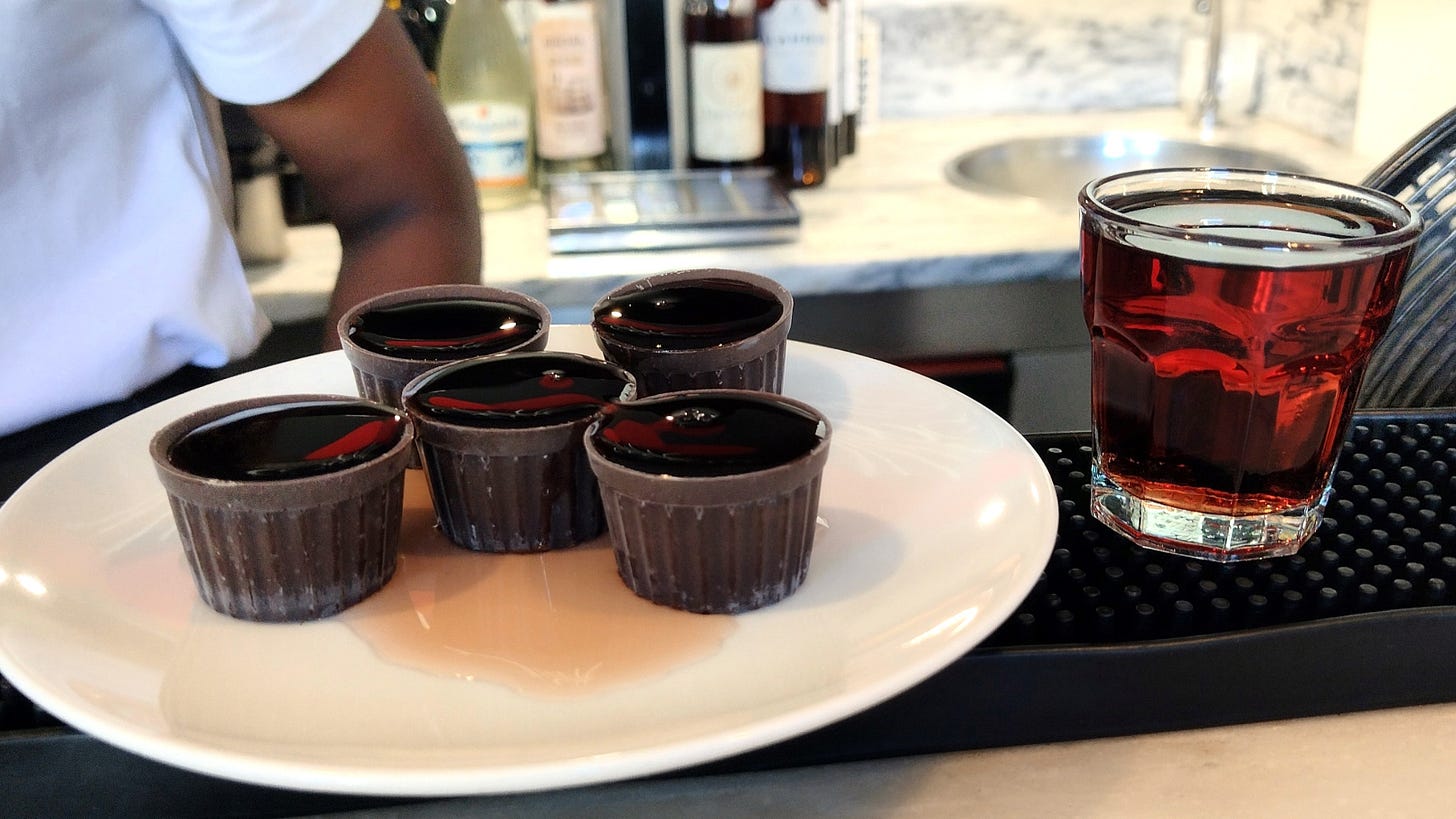Exploring the Top Portuguese Liquors: Flavors, Origins, and Perfect Pairings
A Guide to Portugal’s Finest Spirits, Their Unique Tastes, and How to Enjoy Them.
Portugal’s vibrant culinary tradition encompasses much more than its world-renowned cuisines, wines, and port. Especially during the winter months, Paul, and I both enjoy an after-dinner digestif and Portugal is the home to an array of traditional liquors that reflect its diverse landscapes, vibrant culture, unique ingredients, and time-honored production methods. Here’s a closer look at some of the top Portuguese liquors, their taste profiles, origins, and pairing suggestions.
Licor Beirão
Taste Profile: Licor Beirão is an herbal liquor with a balanced blend of sweetness and bitterness. It offers hints of mint, cinnamon, and rosemary, creating a refreshing yet complex flavor profile.
Ingredients: A secret recipe of herbs and spices, including mint, cinnamon, and eucalyptus, infused into a neutral alcohol base.
Origin: Produced in the Beira region of central Portugal, this liquor has its roots in 19th-century pharmacy remedies.
Pairing Suggestions: Serve Licor Beirão on the rocks as an aperitif or mix it into cocktails like the classic "Beirão Sour." It pairs well with citrus-based desserts or salty snacks like olives and nuts.
Ginja (or Ginjinha)

Taste Profile: Ginja is a sweet and tangy cherry liquor with a slight almond undertone. It has a rich, syrupy texture and a warm finish.
Ingredients: Sour cherries (ginjas), sugar, alcohol, and sometimes cinnamon.
Origin: Predominantly produced in Óbidos and Lisbon, Ginja is deeply embedded in Portuguese culture. Bars and cafes often serve it in small chocolate cups.
Pairing Suggestions: Enjoy Ginja neat, with or without a cherry in the glass. It’s delightful alongside chocolate desserts, especially dark chocolate cake or mousse.
Amarguinha
Taste Profile: Amarguinha is a sweet almond liquor with a slight bitterness reminiscent of marzipan. Its nutty aroma and smooth finish make it irresistible.
Ingredients: Bitter almonds, sugar, and alcohol.
Origin: This liquor hails from the Algarve, Portugal’s southern region known for its almond groves.
Pairing Suggestions: Serve Amarguinha chilled or with a splash of lemon juice. It pairs beautifully with pastries like pastel de nata or almond-based cookies.
Medronho
Taste Profile: Medronho has a fruity yet rustic flavor with a robust alcoholic kick. It is both aromatic and intense, offering a taste of the wild Portuguese countryside.
Ingredients: Made from the medronho (arbutus) berry, native to southern Portugal.
Origin: Particularly popular in the Algarve and Alentejo regions, Medronho is often crafted by small-scale producers.
Pairing Suggestions: Enjoy Medronho as a digestif or paired with traditional Portuguese sweets like fig and almond cake. Its strong flavor complements hearty dishes as well.
Aguardente Bagaceira
Taste Profile: Aguardente Bagaceira is a strong, clear brandy with earthy and fruity notes. Its robust flavor is often described as fiery but smooth.
Ingredients: Made from the pomace (grape skins, seeds, and stems) left after winemaking.
Origin: Produced throughout Portugal, with notable versions from the Douro and Bairrada regions.
Pairing Suggestions: Sip Bagaceira neat as a digestif after a hearty Portuguese meal. It’s best enjoyed with aged cheese or cured meats.
Learn more about Aguardente Bagaceira
Looking for interesting glasses to serve Portuguese Liquors?
On a trip to the coastal Algarve, we had dinner one night in a local Tasca. After dinner, we were served Portuguese Bolota (a limited production Portuguese liquor) in these little terra cotta clay shot glasses. If you live in Portugal, you can often find them in what is commonly known here as “China stores.” These stores are in practically every town and they sell a variety of merchandise – mostly imported items but also some items made in Portugal.
We found these in a local China store. On return trips back to the U.S. to see family and friends, we’ve brought a few of these along with a Portuguese liquor as gifts. At home in Portugal, we serve a variety of liquors to guests in these little glasses.
Amazon.com also sells similar ones.
Portugal’s liquors are varied and flavorful. Each one carries a unique story of tradition and regional pride, making them perfect for both casual sipping and for special occasions. Whether you’re enjoying the herbal complexity of Licor Beirão or the fruity boldness of Medronho, these liquors offer a taste of Portugal in every sip.
Do you have a favorite Portuguese liquor? Leave a comment and tell me about it!
Thanks for being on this journey with me!
Thank you for reading Our Portugal Journey. My newsletter is a reader-supported publication. To receive new posts and support my work, consider becoming a free or paid subscriber to help keep this publication independent.
You can also buy me a coffee or a glass of wine, anytime right here.
Muito obrigada (many thanks) to Lynn for becoming a Supporting Subscriber.
And also thank you to Kate G. and to Mary K. for supporting my work through Buy Me a Coffee. I truly appreciate it!
Until next time…
Obrigada!
Carol.







As always, I learn something new from your work. Thank you for this overview about Portuguese liquors. We will try a few of them during our visit this April and once we complete our relocation, all of these will go on our list for stocking the bar in our new home!
I haven’t tried mist of these. I am not too fond of ginja. My favorite is Beirão.